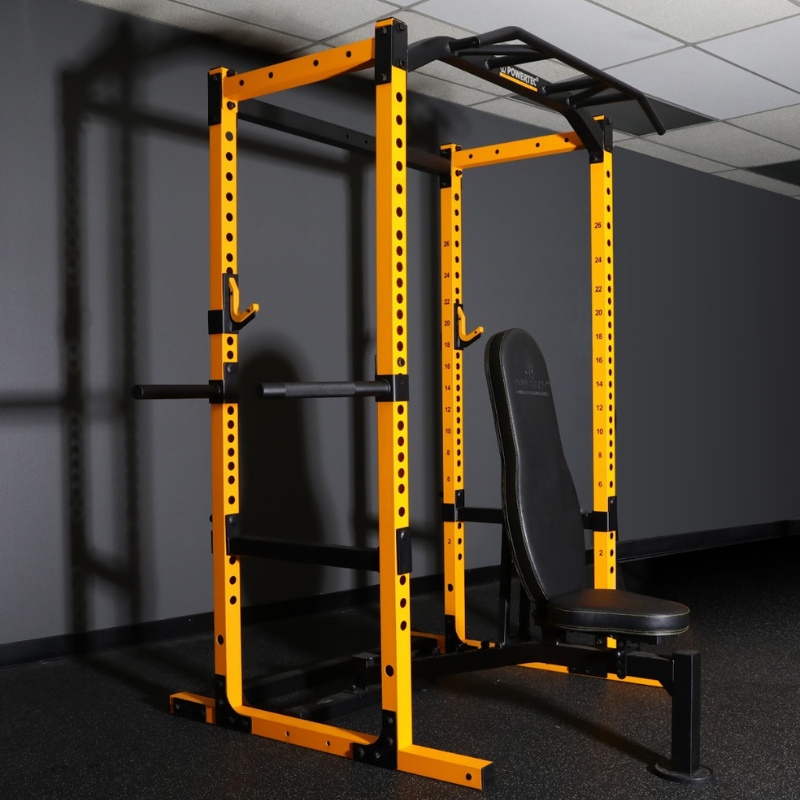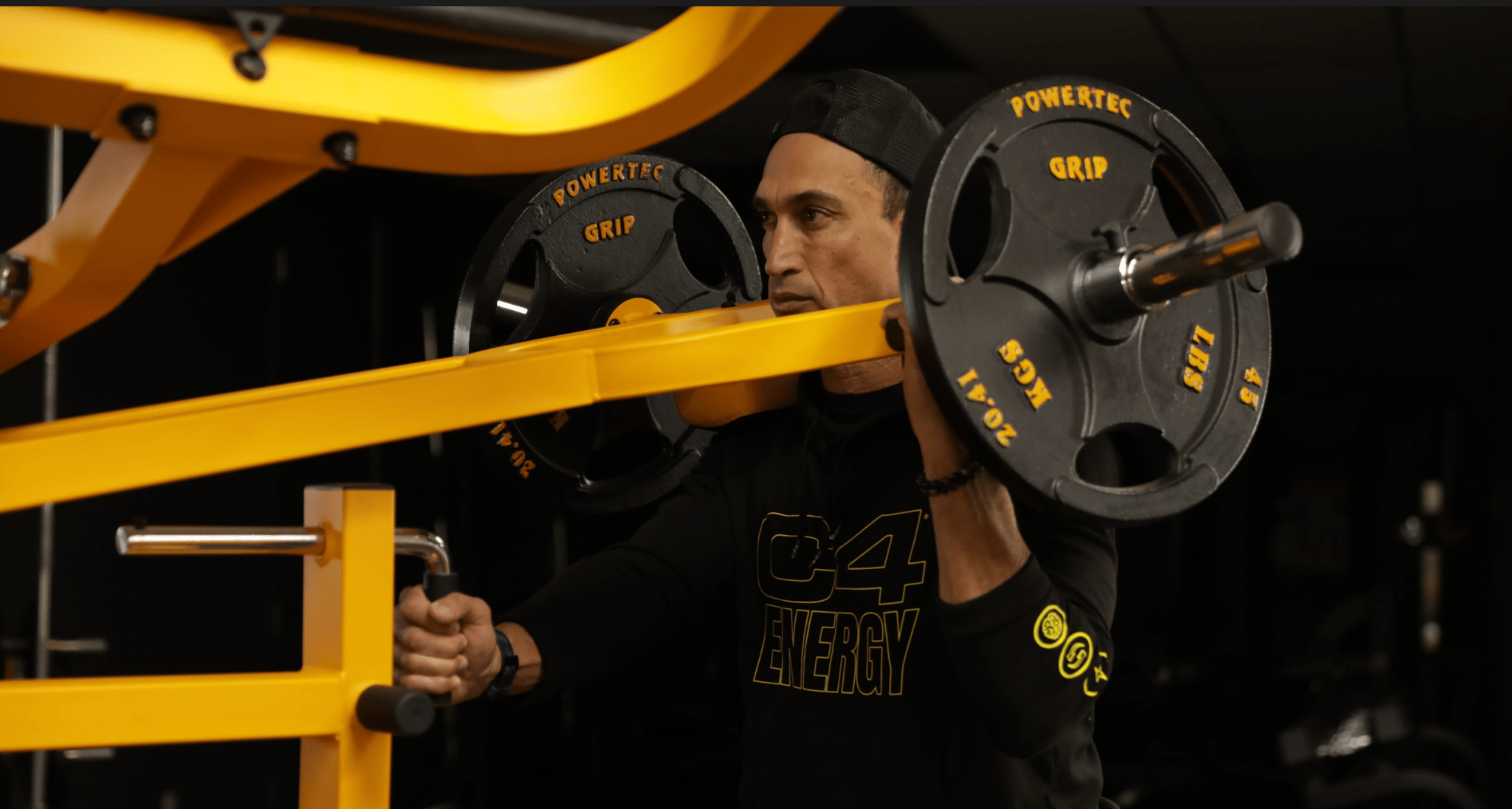Warming up before weight lifting is like turning the key in your car's ignition—it gets the engine running smoothly before you hit the road. Just as you wouldn't rev your car's engine without a proper warm-up, your body deserves the same attention and care to prepare for the physical demands of lifting weights.
By dedicating time to a comprehensive warm-up, you prime your muscles for performance and set the stage for a safer, more effective workout.
Let's explore why a thorough warm-up is a non-negotiable part of your strength training routine.
Why is Warming Up Essential?

Injury Prevention
Injury prevention is the first and foremost reason to warm up before lifting weights.
A proper warm-up raises your core temperature, lubricates the joints, and increases muscle flexibility, minimizing the chances of strains and other exercise-induced injuries. This preparation safeguards you against immediate setbacks and invests in your enduring health and fitness journey.
Improved Performance
Beyond injury prevention, an effective warm-up can enhance your performance. As your body temperature rises, your muscles become more supple and responsive, enabling you to lift heavier with more power and agility.
Improved blood flow from warming up also delivers oxygen and nutrients to your muscles more efficiently, fueling you for increased endurance and strength during your workout.
Increased Flexibility and Mobility
Warming up is essential for improving flexibility and mobility, which are vital for any fitness routine. It helps extend your range of motion, leading to better exercise execution, like deeper squats and full extensions.
Consistent warm-up routines enhance performance, promote muscle development, and help prevent muscle imbalances.
Enhanced Mental Focus
Never underestimate the mental aspect of lifting weights.
It provides a moment to focus and clear your thoughts, aligning your mind and body for optimal concentration on form, breathing, and the mind-muscle connection. This mental clarity can help you push through tough sets and remain dedicated to your fitness objectives.
Components of an Effective Warm-Up Routine

A successful, injury-free strength training session starts with a concise warm-up routine that combines dynamic stretches, light cardio, and targeted activation exercises to prepare the body for weight lifting, such as:
- Dynamic stretching incorporates active movements that stretch the muscles and echo the movement patterns of the workout ahead, like arm circles and leg swings, to enhance muscle flexibility and joint range of motion while keeping the heart rate elevated.
- Light cardiovascular exercises such as brisk walking, jogging, or using an elliptical machine kickstart your warm-up, increasing heart rate and promoting blood circulation, delivering oxygen-rich blood to the muscles, and setting them up for an intense workout.
- Activation exercises round off the warm-up routine, specifically engaging muscle groups to awaken them before weightlifting. These exercises, such as push-ups targeting the upper body and bodyweight squats, prime the neuromuscular system, ensuring the key muscles are prepped and ready to support a successful weightlifting session.
Integrating Warm-Ups into Your Home Gym Routine

Powertec racks and attachments can be a game-changer for your warm-up routine. With the Workbench® Power Rack, for example, you can perform a variety of dynamic stretches and activation exercises. Use the rack for bodyweight squats to target your lower body, or attach bands to the rack for some resistance-assisted stretching.
The beauty of Powertec's equipment and attachments is their versatility, allowing you to warm up every muscle group effectively. With Powertec's financing options, you can enhance your flexibility, mobility, and workout readiness without the upfront expense, making preparing your body for any lifting session easier.
Tips for Maximizing Your Warm-Up
Maximizing your warm-up is essential for a productive workout session. Here are some tips to help you fine-tune your warm-up for optimal performance:
- Duration and Intensity: Aim for a 15-20 minute warm-up to prepare the body without inducing fatigue. Begin with low-intensity activities and progressively increase intensity to activate muscles and prepare the cardiovascular system properly.
- Listening to Your Body: Adjust your warm-up based on how you feel. Focus on areas that need it if you're experiencing tightness or soreness, and consider shortening the warm-up if you're feeling particularly energetic, ensuring all muscle groups are still thoroughly warmed up.
Tailoring your warm-up to your body's needs can enhance your overall workout experience and performance.
Weightlifting Warm-Up FAQ
How long should my warm-up be before weightlifting?
Your warm-up should be long enough to raise your core temperature, increase blood flow to your muscles, and enhance your flexibility and mental focus. We generally recommend a 15 to 20-minute warm-up before weightlifting. This time frame allows for light cardio, dynamic stretching, and activation exercises, setting the stage for a productive strength training session.
Can I skip warm-ups if I'm short on time?
Skipping warm-ups is not advisable, even when you're short on time. Warm-ups are essential for preventing injuries and improving performance. If you're pressed for time, consider a condensed warm-up focusing on dynamic movements that target major muscle groups involved in your workout. Even a few minutes of warm-up is better than none to get your blood flowing and your muscles ready for lifting weights.



Leave a comment